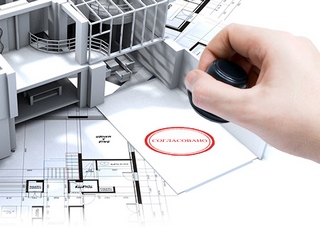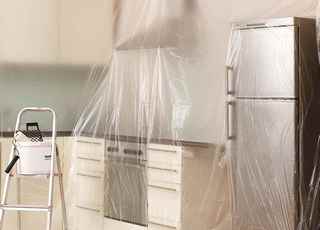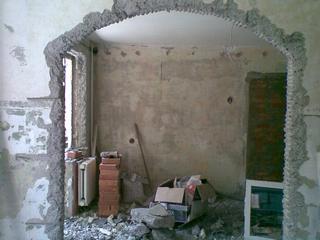Redevelopment and transfer of the door 5 rules for beginners
There are several reasons for the transfer of doors in the apartment, but they must be weighty. Do you think that this case is simple and fast? You are very wrong. Of course, really important arguments should be taken into account.

You will probably agree that this is:
* installation of bulky furniture (for example, a wardrobe, built-in kitchen furniture);
* an unfortunate location of the doors. This can include problems with opening and closing two closely located doors;
* connecting two rooms into one, when one door becomes superfluous, and the second needs to be moved to increase the space in the room.
A few important rules that will be useful for a novice builder.
 |
Rule No. 1: the transfer of the door in the curtain wall, the walls should not be subjected to interference. Just close up the old doors, if it's important. As for the new opening, an extreme need may force you to turn to a good specialist who can calculate the change in the load on the wall when moving the door. To approve the transfer of the door, you will have to take a permit from the BTI, coordinate a lot of technical documentation. You can change the location of the doorway yourself in those walls that are not load-bearing. No options! |
 |
Rule No. 2: dismantling of an interior door should begin with checking the walls with a special device (detector) that can detect wiring, pipes, wires and hidden objects. Do not rely on documents and your own knowledge. A mistake can cost you dearly: from an electric shock to flooding the apartment. You can't be sure of something that wasn't built. You will have to check it necessarily. Wiring, other wires can be transferred, it will not be difficult. There is a problem with pipes. Either do not touch the opening, or get ready to fork out for additional materials and a specialist. |
 |
Rule No. 3: Preparation of premises for work. Do not expect that you will carefully chisel the wall, and the fragments will fly exactly into the specified trash can. You need to take out: carpets, paths, upholstered furniture, small items. The rest is covered with construction film. Be sure to cover the floors with polyethylene, strengthening the tape around the perimeter of the room near the skirting board. The more attention you pay to the preparation of the premises, the easier it will be to eliminate the consequences of your activities. |
 |
Rule # 4: Careful marking of the new opening. Do not hope that everything will be leveled in the course of work. As a rule, the opposite happens. To properly mark a new door, you need to draw a contour on the wall. Be sure to use the level for horizontal and vertical lines. This is a guarantee that the new door will function normally, will not sag. Remember about the lintel, which should hold the bricks, blocks above the door. If the wall is thick, then it is problematic to repeat the marking exactly on the reverse side. Through beacons are drilled in the corners, according to which the drawing is restored. It is important to leave an inch of stock, the place will then simply be closed with platbands. |
 |
Rule # 5: Start working with a new opening. If the masonry is brick, then with careful disassembly you will get the material with which you will then lay the old hole. |
Pub date: 2017.07.06